Museums in Turkey and France display artwork by Azrieli School PhD student
December 20, 2021
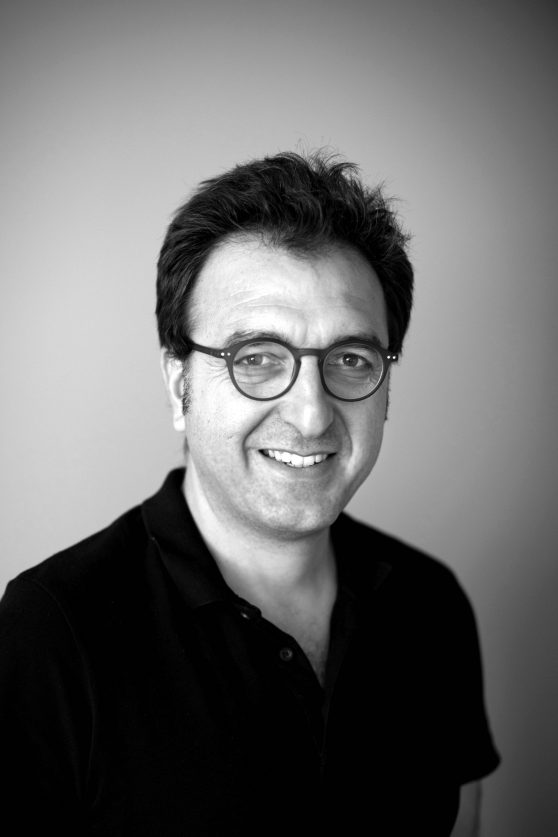
Serkan Taycan was already an established artist in Turkey, with a background in engineering and documentary photography, before embarking on a doctorate at the Azrieli School of Architecture & Urbanism last year.
His work, which focuses on ecological and urban transformations, is currently on display in two museums in Istanbul, Turkey, and Marseille, France. A third show, also in Istanbul, recently closed.
“I have always been interested in architecture and space-making practices,” says Taycan, 43. “The artworks I produce stand at a point between architecture, urban studies, and ecology.
“After my works were exhibited in the Turkish pavilion of the Venice Architecture Biennale in 2013, I made a serious entrance into the field of architecture,” he adds.
Istanbul’s newest arts and cultural centre, the Museum Gazhane, opened last July with a solo exhibition of Taycan’s work, titled Towards the City. About 70,000 people have visited so far.
The exhibition, shaped around the questions, “What is urbanization and in what ways is it manifested in Istanbul?” consists of three photo series, Habitat, Shell, and Agora, and a now-famous walking route, Between Two Seas.
In Habitat, Taycan looks at the countryside through the lens of identity and belonging. In Shell, he wanders the peripheries of Istanbul, looking for traces of the city’s transformation. Finally, in Agora, he focuses on the city’s squares, which are the most important public spaces of Istanbul.
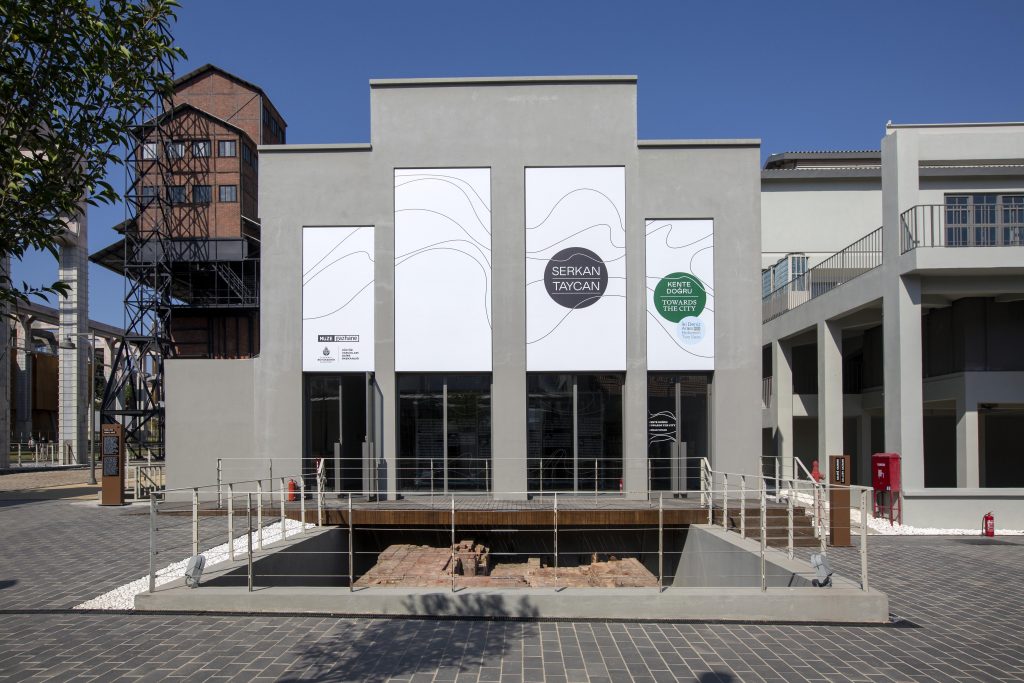
Between Two Seas, the fourth work, consists of photos and videos made by hikers on a route created by Taycan in 2013 as an art project.
“They are all complementary works,” he explains. “The first three are representative surveys of the urbanization process with photographs, and the fourth is the bodily experience of the same process.”
Between Two Seas is a 62-kilometre walking route between the Black Sea and the Marmara Sea that follows the path of Canal Istanbul, an impending shipping passage connecting the two seas.
The route, composed of four 15-kilometre parts, progresses from the city’s periphery toward its centre, passing through rural and forest areas and water basins. The trajectory also takes in the new airport area, the road leading to the Third Bosphorus Bridge, excavation dump sites, industrial sites, and housing areas. Along the route are places of cultural and historical significance, such as the Yarimburgaz Cave, the oldest settlement in Istanbul, and inner-city vegetable gardens.
The project provides a platform to witness the ongoing radical transformation of the city, threatening the ecological and social life of inhabitants.
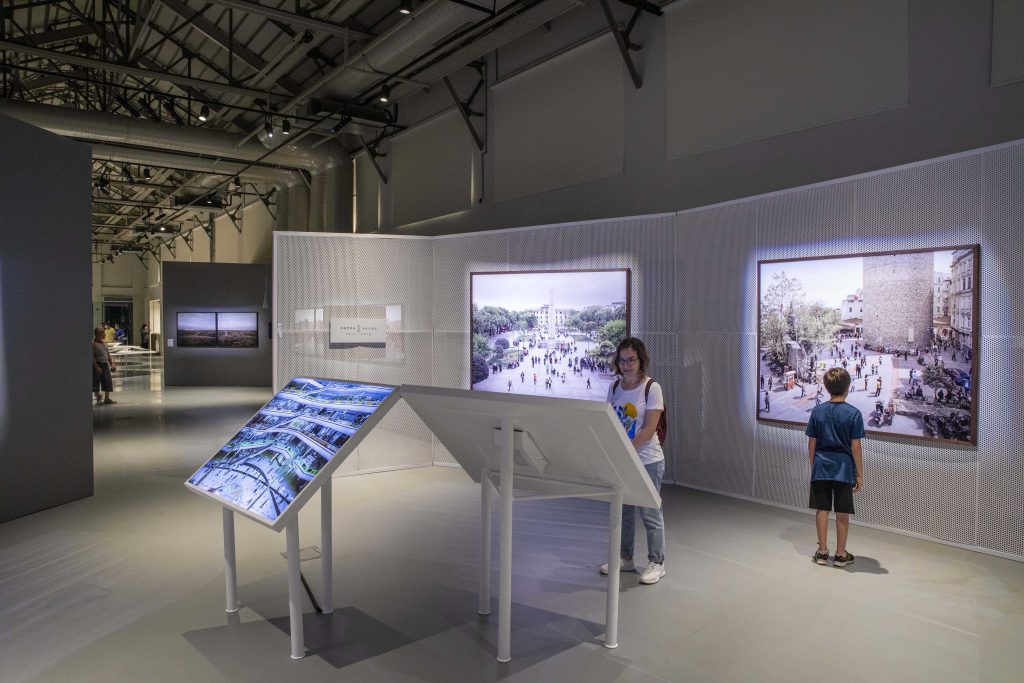
“It is a participatory and activist project that aims to create opportunities to defend urban rights and to be included in public decision-making processes,” says Taycan. “It aims to record tangible and abstract values and to create opportunities to discuss the preservation and development of these values.”
The inspiration for the project was the Gezi Resistance of 2013, a protest movement sparked by a proposal to demolish Istanbul’s Gezi Park. It encompassed various concerns, including rising authoritarianism, environmentalism, and rampant development.
“The issues I’m working on cannot be detached from the political and social movements which are happening in Turkey and globally,” he has said.
“This was also the first project in which I implemented my engineering skills and tools, like mapping, waymarking and surveying.”

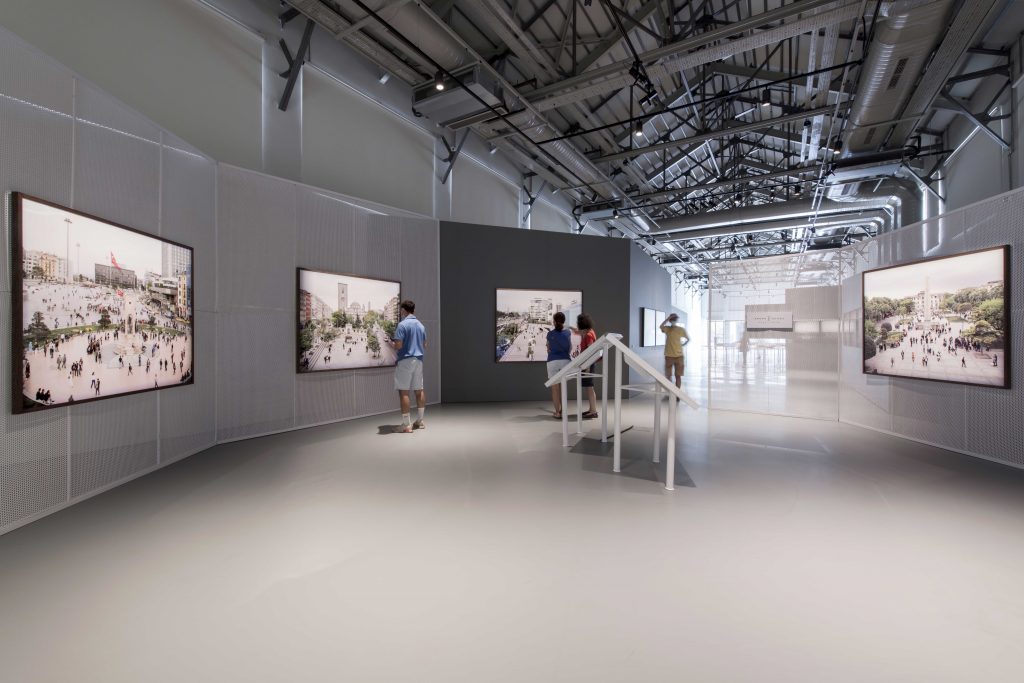
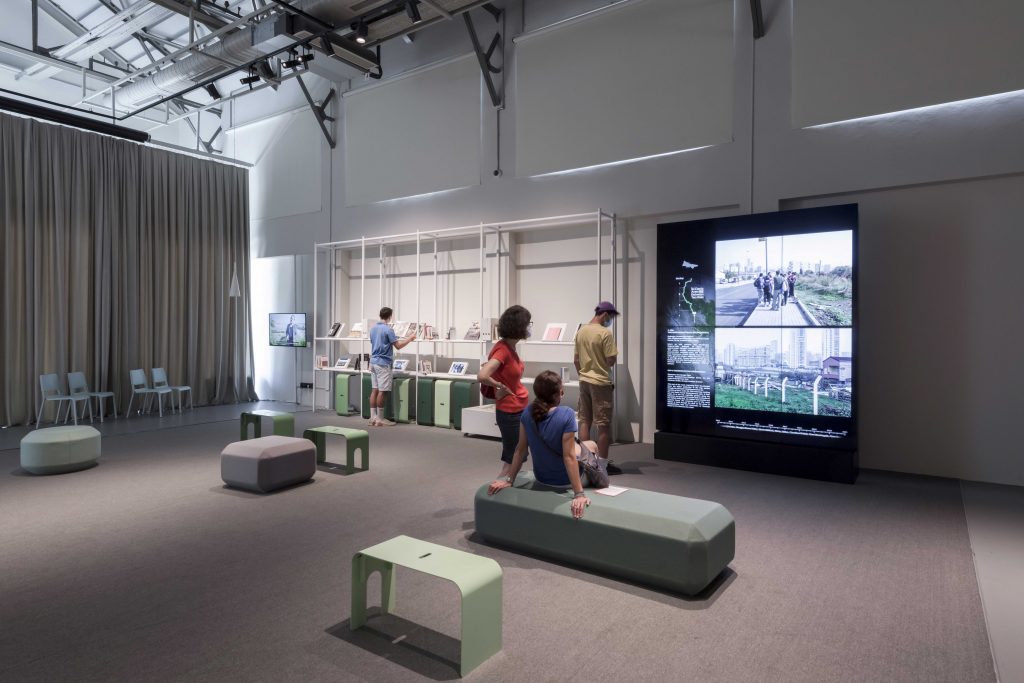
The 2013 Istanbul Biennial showcased the project as a map and series of photos. Since then, Taycan has led hundreds of people along the trail, including groups of European and American architecture students. Using his map as a guide, others have cycled, run, and camped along it independently.
Between Two Seas has also been on display for three years at the Mediterranean Civilizations Museum (Mucem) in Marseille in an exhibition called Connectivities. The exhibition ends on December 31, 2021.
Another work based on the walking route project was part of a group exhibition, Past Present Istanbul, at Sakıp Sabancı Museum in Istanbul that ended November 28.
This show featured a video titled Two Feet and Two Tires on Between Two Seas.
In the video, Taycan presents his conversations with project collaborator and urban geographer Jean-François Pérouse, who uses walking as a research method, and with illustrator and writer Aydan Çelik, who explores the city’s periphery by cycling.
Taycan walked the route with Pérouse and cycled it with Çelik
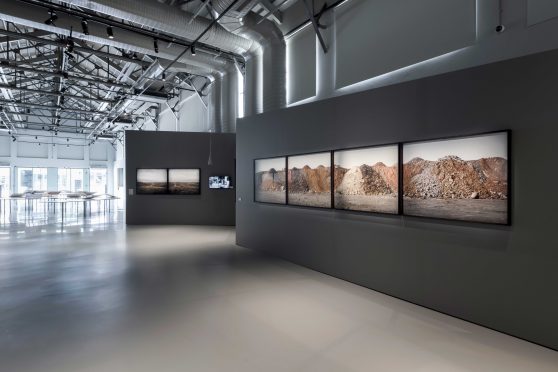
The solo exhibition at the Museum Gazhane, located in a former Ottoman-era gasworks, closes in January 2022. As it winds down, Taycan reflects on its special significance.
“I took pictures of these buildings before they were restored, for an industrial heritage study that I carried out in 2010,” he recalls. “It is also in the exhibition.
“Gazhane is located in the middle of a workers’ neighbourhood,” he adds. “It is very meaningful to me that such a large area is open to public use and that my exhibition is its opening exhibition.”
Now in his second year of the PhD in Architecture program, Taycan moved to Ottawa from Istanbul last month.
He chose Carleton University for his doctorate after encouragement from Associate Professor Ozayr Saloojee, now his supervisor, who he met in Istanbul.
“The idea of doing a PhD was slowly starting to form in my mind,” Taycan says. “When I examined the program of the school, I realized that it was an environment suitable for what I wanted to do. The fact that the school was in Canada was very effective in making this decision for me.”
His thesis focuses on infrastructure, in particular the massive and controversial Canal Istanbul project.
“My main research is how infrastructure affects people’s lives and how it is used as a management apparatus,” he says.
“Another sub-title of my research is the relationship between the architectural practices of the walking route, Between Two Seas, which I created 10 years ago on the Canal line. In this context, I explore the limits of walking as a research and resistance method.”
Now that he is in Canada, he hopes to show his work here.
“I am familiar with the context of art here,” he says. “I hope that as I get to know the institutions, new opportunities will emerge.”
About Serkan Taycan
Serkan Taycan holds a degree in engineering from Yıldız Technical University in Istanbul. He also completed a master’s degree in visual arts at Sabancı University in Istanbul and photography at Aalto University in Helsinki, Finland.
In his research-based artistic practice, Taycan focuses on the dynamics of ecological and urban transformations and uses media such as photography, video, mapping, and walking.
His works have been exhibited in various venues including the Venice Architectural Biennial, Istanbul Biennial, Helsinki Photography Biennial, Mardin Biennial, Sinop Biennial, Cappadox, and Thessaloniki Photography Biennale, as well as MAXXI, MuCEM, Malmö Museum, SALT, Pera Museum, Istanbul Museum of Modern Art, and Sakıp Sabancı Museum.
Taycan held artist residencies at Cité Internationale des Arts, Paris, in 2015 and at Delfina Foundation, London, in 2016. His book, Agora #04: Taksim, was published in 2017.
Between 2016–2018, he taught public art and urban culture, and architectural photography courses as a part-time faculty member at Bilgi and Bahçeşehir Universities in Istanbul.
He also gave lectures and led practice seminars and workshops at Iceland Academy of the Arts (Reykjavík, Iceland), Srishti Institute of Art, Design and Technology (Bangalore, India), and Leeds Arts University (Leeds, England.)